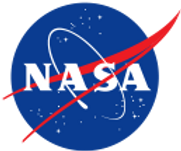Plume-Surface Interactions for the Moon and Mars
Project Motivations
The phenomena of plume-surface interaction is a point of interest across multiple aerospace applications. With organizations like NASA and the ESA, as well as companies like SpaceX planning future missions to the Moon and Mars, the question of how to ensure a safe landing in these environments is a serious one. While Landers and Rovers have successfully made these landings, the dust and debris kicked up by jet plumes reduces visibility and increases the potential for damage to crucial instrumentation. The same can be said for landing on Earth. This research extends to the defense industry as well, where certain aircraft need to be capable of landing and taking off in unprepared or uncontrolled environments. By understanding the behavior of plume-surface interactions, these maneuvers can be made safer and craft more robust.
Computational Fluid Dynamics programs can be made to simulate these conditions, but there is no current scale experimental model for these behaviors to verify results. The goal of this project is to develop a physical system that could serve to demonstrate and capture the behavior of plume surface interactions under various conditions to better understand the fluid and particle behavior.


NASA OVERFLOW Overset Grid CFD Flow Solver - an example of a CFD model currently in use for related research.
View of Mars 2020 Perseverance Rover being lowered to the surface of Mars through the large cloud of dust and debris.




Various agencies and companies with interest in the PSI field of research.